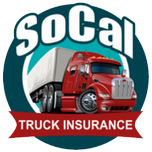
Best Practices for Reducing Risks on the Road
In the United States economy, the commercial trucking industry plays a key role. Each year, truckers transport goods between factories and production centers to consumers over millions of miles. Having to travel long distances and haul heavy loads, trucking operations are exposed to a variety of risks. It is therefore essential to have cheap truck insurance coverage.
An effective risk management plan, which covers trucking insurance policies and other business-related risks, starts with a thorough understanding of the risks involved. Trucks, truck drivers, and cargo are kept safe on America’s roads by adopting the truck industry’s best practices.
A Guide to Driving Safely and Responsibly
Commercial truck insurance in California plays a critical role in a comprehensive risk management program for owner-operators and trucking businesses. However, the adoption of safety-oriented practices can help trucking companies save money—while reducing injury risks, property damage, and truck insurance costs.
In addition to getting insurance, the following are some of the best practices for reducing on-the-road risks that can help trucking companies achieve more efficiency and safety.
Maintain Your Vehicle Regularly
Maintaining clean windows, checking your brakes, and ensuring your tires are properly inflated are just some of the ways you could enhance your protection.
You will have more control when driving if your vehicle is in good condition, your body is in the correct position, and your mirrors are properly adjusted within the vehicle.
Drive Without Distractions
Cell phones are one of the most common culprits that keep drivers’ eyes off the road, but they’re not the only ones. You can also become distracted by looking at yourself in the mirror, looking for something you dropped, or messing with the radio.
Wait until you arrive at your destination to retrieve fallen items and turn your phone off while driving to avoid getting in an accident.
Always Wear a Seatbelt
Nearly 14,000 lives are saved every year by seat belts, according to the National Highway Traffic Safety Administration. When you are wearing a seat belt in a car, you are less likely to be thrown from it in an incident and to collide with other parts of the car.
Airbags can also be cushioned by seat belts if they deploy—so that if they are triggered in accidents, they will not injure you.
Take Enough Rest Before Long-Distance Driving
The dangers of driving while drowsy are just as great as those of driving under the influence of alcohol. The effects of drowsiness include a slower reaction time, impaired judgment, and decreased awareness.
Sleeping only five hours or less exposes drivers to the same crash risks as drivers who drive over the legal limit of alcohol.
Keep an Eye on Blind Spots
It is well known to truckers that blind spots can compromise their safety while driving. Blind spots cannot always be detected by rear-view and side-view mirrors, so it is within the driver’s liability to monitor these areas with additional strategies.
By looking out the window before changing lanes, you can reduce the risk of a collision. To enhance driver safety, blind spot monitoring systems are now available on some modern truck vehicles.
Maintain Long Stopping Distances
Unlike vans and other private vehicles, large trucks and buses require space equivalent to two football fields to stop safely.
Failure to slow down for curves or ramps or driving too fast in some weather or road conditions can cause a rollover or crash. Wide turns should be made with care and long stopping distances should be observed.
Prepare for Your Trip in Advance
Maintain an awareness of weather conditions, road conditions, detours, and mountainous routes so that you can plan your driving time accordingly.
Depending on the application, noncommercial navigation systems and apps might not warn you about height and weight limits and other Commercial Motor Vehicle (CMV) state restrictions that trailers could encounter.
Always Make a Signal
During non-peak traffic periods or when driving along long stretches of road, it may be tempting to make lane changes or exit highways without signaling. However, when you fail to signal, you increase your chances of being involved in a collision.
Regardless of whether other vehicles are nearby, drivers must signal before they change lanes or when turning, since it is required by the law.
Does Your Commercial Truck Need Insurance?
There are many benefits associated with working as a commercial truck driver in California, but there are also many risks, such as breaking clearinghouse standards. A cheap commercial truck insurance policy can go a long way; its coverage options are specifically designed to protect the business and vehicles of businesses in the trucking industry in the case of an accident.
Considering all this, it is important that you have a reliable commercial truck insurance company. You will be covered if you have general liability coverage that covers damage you cause to other people’s property during your accident. In the event that your truck injures another party, your auto policy will cover their medical bills and claims for bodily injuries.
While their general liability insurance covers their vehicles, this auto insurance policy does not cover accidents damaging owner-operators’ trucks, injuring their truck drivers, or even losing their motor truck cargo. For this, it might be a good idea to buy motor truck cargo insurance.
Frequently Asked Questions:
What are some key tips for maintaining safe following distances on the road?
Maintain a safe following distance by using the “three-second rule” and increasing it to six seconds in adverse weather or poor road conditions.
How can truck drivers mitigate the risks associated with driver fatigue?
Practice good sleep habits, take regular breaks, and adhere to regulated hours of service to prevent driver fatigue and ensure alertness on the road.
What are some effective strategies for managing blind spots while driving?
Adjust mirrors properly, conduct regular checks for vehicles in blind spots, and use signals and extra caution while changing lanes or making turns.
How can truck drivers effectively handle adverse weather conditions?
Reduce speed, maintain a safe distance from other vehicles, use proper lighting and signals, and be aware of potential hazards caused by weather conditions.
What measures should truck drivers take to secure their cargo?
Use proper load securement techniques, regularly inspect and adjust cargo during transit, and comply with regulations to prevent cargo shifting or falling off the vehicle.
Where to Get Cheap, Adequate Truck Insurance?
Due to so many costs involved in commercial trucking insurance, it can be overwhelming to choose a provider. Various things can be done by truckers to lower the cost of their commercial insurance premium, primarily by practicing safe and responsible driving.
With SoCal Truck Insurance, we can assist you in complying with Federal Motor Carrier Safety Administration (FMCSA) regulations and providing truck insurance.
It is a good idea to compare insurance companies’ rates and ask for a truck insurance quote when looking for affordable truck insurance. On most companies’ websites online, you can find free commercial truck insurance quotes for your property or business.
While implementing the best practices for reducing risks on the road is paramount, it’s also crucial to consider what happens when risks turn into realities. Expand your understanding of insurance strategies by visiting our latest blog post on high risk insurance. This in-depth resource will provide you with vital insights into managing potential high-risk scenarios and safeguarding your trucking operations.
Rather than paying separate premiums for each auto insurance policy, purchase multiple in one company and make only one payment monthly. For more information on how we can help you get started, contact us at 888-891-4304 at SoCal Truck Insurance today!


